Cú Chulainn and Ulster Cycle Epics: Exploring Ancient Irish Mythology
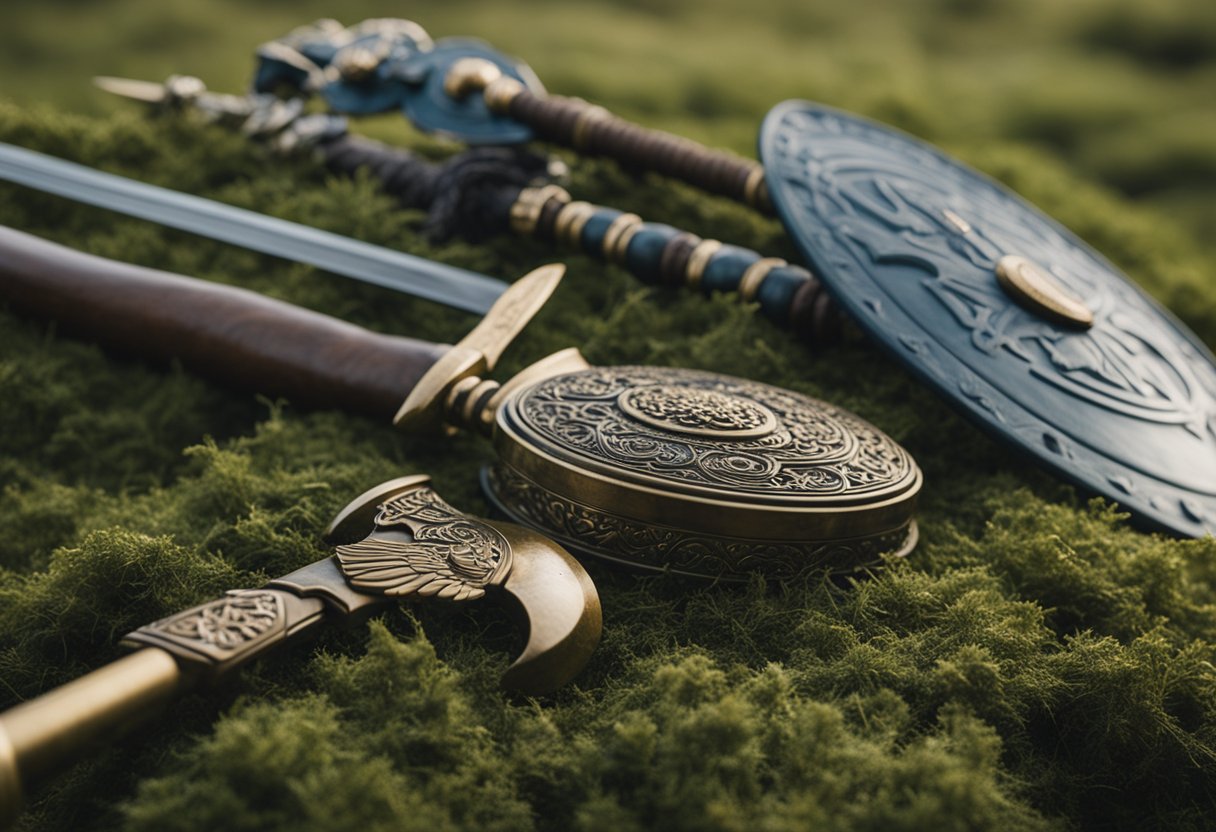
Updated On: April 24, 2024 by Eman Sameh
Cú Chulainn stands as one of the most compelling figures of Irish mythology, embodying the heart and soul of the Ulster Cycle epics. This set of stories and legends, known as the Ulster Cycle, forms a cornerstone of early Irish literature and captures the imagination with its accounts of heroism, honour, and tragedy. The tales are set in and around the ancient kingdom of Ulster, in what is now Northern Ireland, and they delve into the lives and battles of a group of characters known to be as formidable in war as they are noble in spirit.
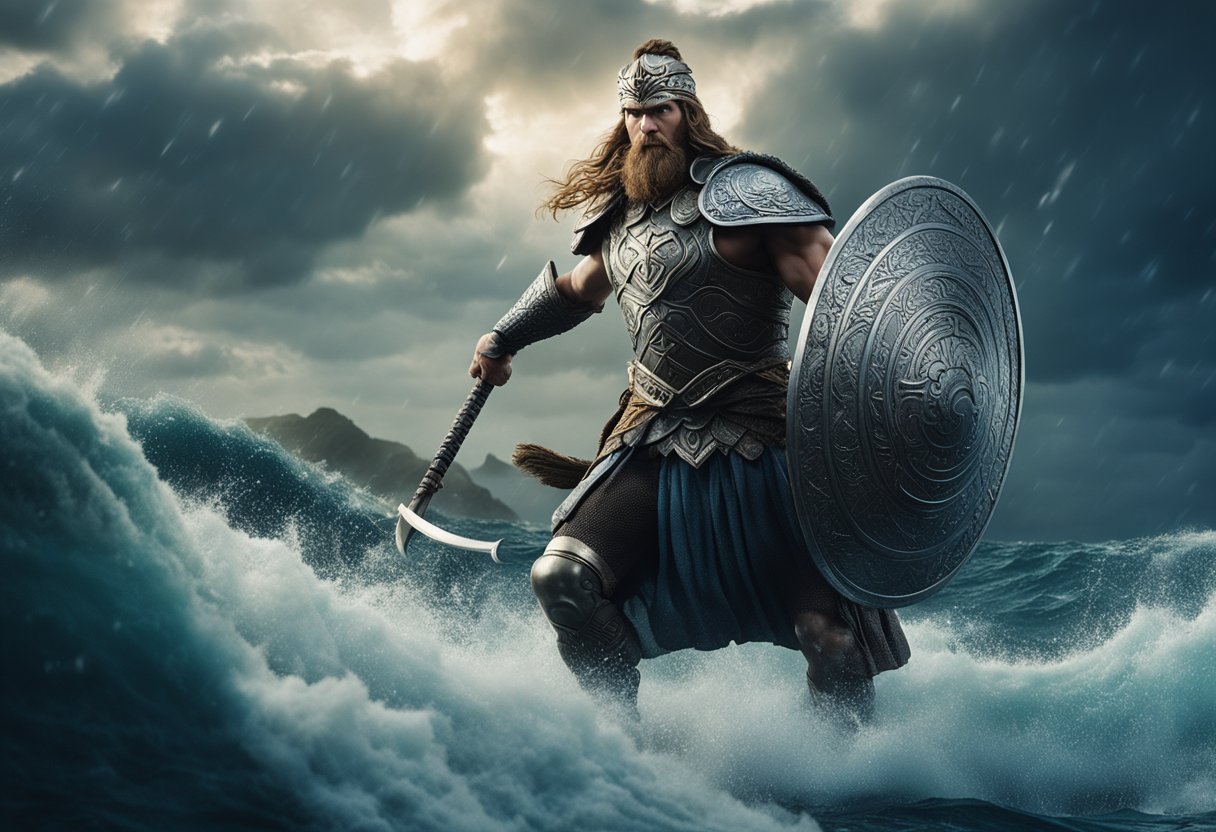
These epic narratives intertwine the extraordinary feats of Cú Chulainn, also known as the Hound of Ulster, with the complex tapestry of Celtic myth and history. Through his adventures, we explore the vibrant world of the Ulster warriors, known as the Red Branch Knights, and their king, Conchobar mac Nessa. The sagas present a rich array of characters, significant tales of heroism, mythological sites, and the profound cultural impact of these stories. With a legacy that has endured centuries, the Ulster Cycle and its heroic mainstay, Cú Chulainn, continue to influence literature, art, and popular culture far beyond their Irish origins
The Ulster Cycle: An Overview
Within the rich tapestry of Irish mythology, the Ulster Cycle is a cornerstone of heroic tales and remarkable narratives that evoke a deep connection to Ireland’s ancestral past.
Origins and Literary Significance
The Ulster Cycle, also known as an Rúraíocht, is among the four major cycles of Irish mythology, a collection of medieval legends and sagas originating in Old Irish and Middle Irish manuscripts. Its literature is esteemed in the realm of Irish culture and storytelling, revealing the depth of oral tradition that predated its written form. These heroic tales were composed and transmitted through generations, ultimately being scripted by medieval monks on parchment, thus marking the intersection of pagan epics with Christian scribes.
Key Themes and Motifs
At the heart of the Ulster Cycle is a rich narrative fabric woven with themes of honour, loyalty, and destiny. It showcases the feats and tragedies of mythic characters like the warrior Cú Chulainn and King Conchobar mac Nessa. Central to these narratives is the concept of fate and supernatural intervention, often manifested through the gods of Irish lore. The sagas intricately layer human struggles with the whims of the divine, painting a grandiose picture of heroism against the backdrop of Ulster’s ancient societal structures.
Cú Chulainn: The Hound of Ulster
Cú Chulainn, the legendary warrior of the Ulster Cycle, stands out as one of the most powerful heroes of the Irish mythological pantheon. He is often compared to Hercules from Greek mythology. His life, marked by extraordinary feats and tragic destiny, paints the picture of a prototypical hero in the Celtic Heroic Age.
Birth and Early Life
Cú Chulainn, originally named Setanta, was the son of Dechtire and the god Lugh of the Long Arm, which granted him a demigod status. His remarkable birth story foreshadowed the prodigious life that lay ahead of him. As a child, he gained his famous moniker when he slayed the ferocious hound of Culann, the smith, and took upon himself the duty of becoming the guardian hound of Ulster, thus becoming known as ‘Cú Chulainn’, meaning ‘Culann’s Hound’.
The Hero’s Rise and Deeds
Trained by the warrior woman Scáthach, Cú Chulainn developed unparalleled combat skills, including the mastery of the lethal Gae Bolga, a magical spear that ensured victory in his countless battles. His feats and adventures are many, but he is most esteemed for his single-handed defence of Ulster during the epic Táin Bó Cúailnge. His transformation into the berserker-like ríastrad endowed him with monstrous strength, making him an unstoppable force on the battlefield.
The Demise of Cú Chulainn
The end of Cú Chulainn came through a series of tragic events woven by fate and the breaking of his geasa (sacred vows). Betrayed by those he trusted and weakened by the obligations of his geas, he met his demise at the hands of lesser men. His last act of defiance was to tie himself to a standing stone, facing his enemies, so that he could die on his feet. His loyal steed, Liath Macha, and his killer, regretful of their roles in the demise of such a hero, marked the passing of Ireland’s greatest warrior.
Major Characters and Figures
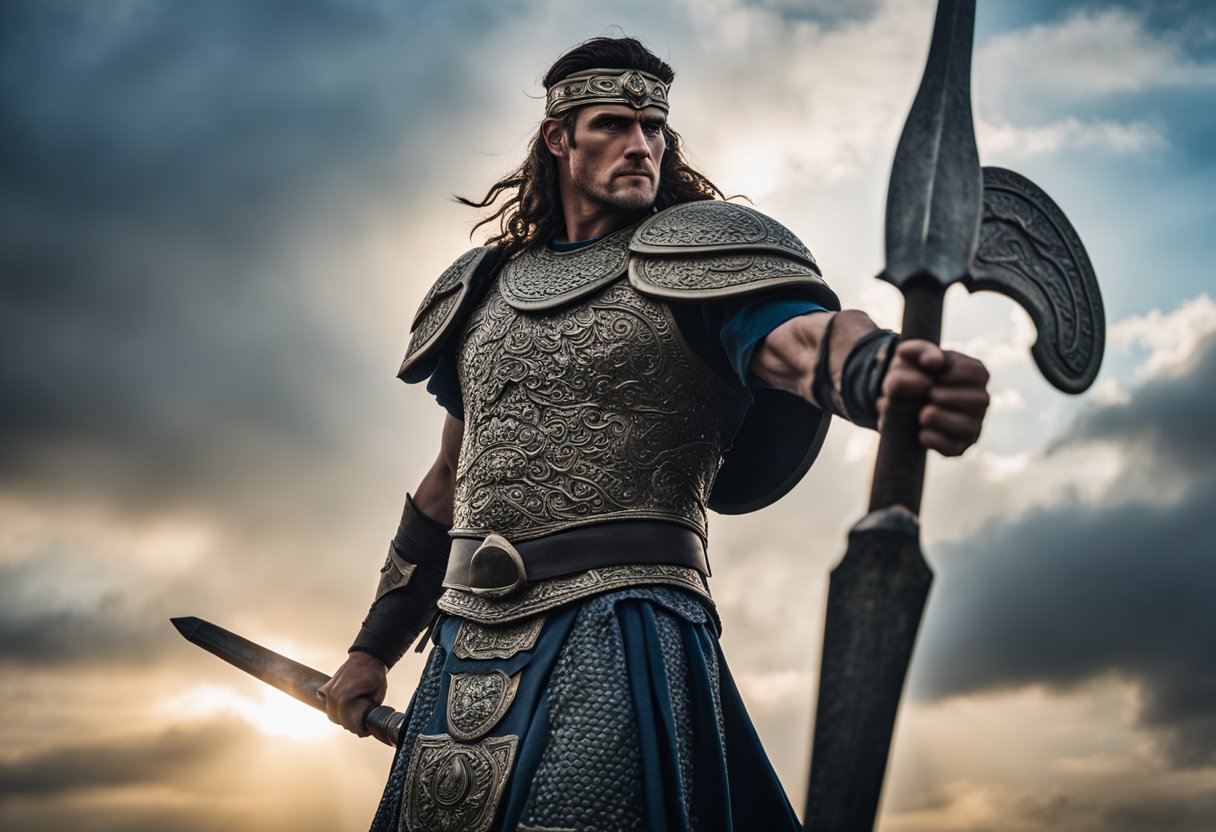
In the tapestry of the Ulster Cycle epics, a pantheon of notable figures emerges, each contributing uniquely to the rich narrative. Among these, we find kings, warriors, and mystics whose deeds and legacies are etched into Irish lore.
King Conchobar mac Nessa
Conchobar mac Nessa, the king of Ulster, is central to the Ulster Cycle. Renowned for his wise and fair rule, he is a key figure in tales set at his court in Emain Macha. His influence over the region and his role in the stories of other characters, such as Cú Chulainn, make him a pivotal character in these epics.
Queen Medb of Connacht
Fierce and formidable, Queen Medb of Connacht is best known for instigating the Cattle Raid of Cooley, seeking to equal her husband’s wealth by acquiring the prized bull Donn Cuailnge. Medb’s tenacity and cunning in battle are emblematic of her unyielding desire for power and prestige.
Emer, Cú Chulainn’s Wife
Emer garners respect for her loyalty and wit. As Cú Chulainn’s wife, Emer’s love story with him is one of the most touching aspects of the saga. Though she faces many trials due to her husband’s heroic deeds and conflicts, her steadfastness and astuteness remain unshaken.
The Druid Cathbad
Cathbad, the druid, is a wise and prophetic figure whose visions and mastery of magic greatly influence the fates of those in the Ulster Cycle. He is especially notable for the crucial role he plays in the destiny of Cú Chulainn, foretelling key events in the hero’s life.
The Warrior Woman Scáthach
Scáthach is a revered warrior woman who resides in the land of Alba, today known as Scotland. She is instrumental in training Cú Chulainn in the arts of combat, including the use of the lethal Gáe Bolga, a unique spear said to have unfathomable power. Scáthach imparts not only martial skills but also wisdom that shapes Cú Chulainn into the formidable hero he becomes.
Significant Tales of the Ulster Cycle
The Ulster Cycle offers a captivating glimpse into Ireland’s ancient past, filled with heroic sagas and enthralling narratives. Each tale contributes to the cycle’s rich tapestry, presenting complex characters and epic conflicts that have echoed through the ages.
Táin Bó Cúailnge
Often considered the central epic of the Ulster Cycle, Táin Bó Cúailnge, or the Cattle Raid of Cooley, recounts a formidable war sparked by Queen Medb of Connacht’s determination to possess the prized brown bull of Cooley. It is in this saga that Cú Chulainn, the cycle’s most renowned hero, asserts his prowess, single-handedly defending Ulster against the invading forces.
The Wooing of Emer
In The Wooing of Emer, we explore the romantic endeavours of Cú Chulainn as he seeks to win the hand of Emer. This tale is not just about love; it echoes the warrior’s skills, as Emer will only marry a man with unparalleled prowess, setting Cú Chulainn on a journey to prove his worth through a series of formidable challenges.
The Tragic Saga of Deirdre
The sorrowful narrative of Deirdre, or Deirdre of the Sorrows, unveils a tale woven with love, intrigue, and tragedy. Destined for heartache from birth, Deirdre’s story follows her defiant elopement with the warrior Naoise, leading to a chain of events that culminates in devastation and grief, deeply affecting the whole of Ulster.
The Death of King Conchobar
The demise of King Conchobar Mac Nessa marks a stirring end to one of the Ulster Cycle’s pivotal characters. The story, Aided Con Culainn, depicts the king’s tragic death, resulting from injuries sustained in battle and the intangible machinations of fate—further entrenching the notion of inevitable destiny that pervades the cycle’s narratives.
Mythological Sites and Kingdoms
In the vibrant tapestry of Irish mythology, certain locations stand out as pivotal settings for legendary tales, especially those within the Ulster Cycle. These sites, steeped in lore, provide the backdrop for epic narratives that have been passed down through generations.
Emain Macha: The Capital of Ulster
Emain Macha, known today as Navan Fort, is not just a mythological site but a real historical location closely linked to the Ulster tales. As the reputed capital of the Ancient Kingdom of Ulster, this site was central to the region’s power and the setting for the court of King Conchobar mac Nessa. Emain Macha is synonymous with strength and governance and features prominently in stories of the hero Cú Chulainn and the epic Táin Bó Cúailnge (The Cattle Raid of Cooley).
Navan Fort: The Myths and Archaeology
At Navan Fort in Armagh, myths fuse with tangible evidence from the past. Archaeological findings here illuminate the existence of an early Iron Age ceremonial site, perhaps once the embodiment of royal power in the Ancient Kingdom of Ulster. The Fort’s association with the mythic Donn Cuailnge, the prized brown bull in the Ulster Cycle sagas, reflects the intertwining of legendary narratives with historical places, bringing to life a time where the borders between myth and reality were indistinct.
Cultural Impact and Adaptations
Irish epics, particularly the Ulster Cycle, have left an indelible mark on the nation’s cultural fabric, influencing literature, arts, and the collective Irish consciousness through the centuries.
Influence on Irish Culture and Identity
The Ulster Cycle, with stories of Cú Chulainn and the kingdom of Ulster, is deeply woven into the tapestry of Irish culture. Its legends have become a cornerstone of Irish identity, symbolising the values of courage and heroism. The cycle’s tales were initially passed down orally before being transcribed in the 12th century, preserving a cultural legacy. Literary giants like William Butler Yeats drew upon these narratives, seeing in them the embodiment of a nascent Irish nationalism and a connection to a glorious, mythic past.
- Impact on Arts:
- Poetry: Yeats’ works, such as “Cuchulain’s Fight with the Sea”, showcase the saga’s inspiration.
- Plays: John Millington Synge and W.B. Yeats incorporated themes into their plays to invoke Irish mythic heritage.
- Influence on Identity:
- Reinforcement of national identity through the celebration of native legends.
- Inspiration for the Irish cultural revival during the late 19th and early 20th centuries.
Modern Interpretations and Literature
The legacy of the Ulster Cycle has transcended centuries, inspiring modern adaptations that reinterpret the tales for contemporary audiences. Thomas Kinsella’s translation of ‘The Táin’, for example, brought the Ulster Cycle to a wider audience, bridging the gap between ancient lore and modern sensibilities. These adaptations often serve to reflect current societal values, demonstrating the timelessness and adaptability of the Ulster Cycle’s narratives.
- Contemporary Adaptations:
- Novels: Modern literature continues to explore the Ulster Cycle, either retelling the stories or drawing from their themes.
- Popular culture: The cycle’s influence extends into films, gaming, and graphic novels.
By engaging with these epics, we continue to reaffirm the importance of our heritage and the ongoing relevance of our ancient stories. Through literary and artistic expression, the Ulster Cycle’s influence endures, shaping our understanding of Irish values and history while invigorating them with new life for generations to come.
Literary Devices in the Ulster Cycle
The Ulster Cycle is rich with literary devices that deepen the narratives and bind the epics together. From prophecies that drive the plot to complex symbolism that weaves a larger tapestry of meaning, these stories utilise a range of techniques that have allowed them to endure through the centuries.
The Role of Prophecy and Omens
Prophecies and omens are vital narrative devices within the Ulster Cycle, often foretelling the fates of characters and influencing their actions. A notable example is the prophecy foretelling the hero Cú Chulainn’s great deeds and early death, which adds a layer of tragic inevitability to his story. Such prophecies create a sense of suspense and tension as characters attempt to avoid their doomed fates or, in some cases, march willingly towards them.
Similarly, omens permeate these tales, providing the characters and audience with glimpses into the supernatural forces at play. Omens often manifest before significant events, such as battles or the outcomes of geasa (singular “geis”), which are personal taboos or obligations placed upon characters, leading to a sense of predestination that is hard to escape.
Symbolism and Allegory in the Epics
Symbolism abounds within the Ulster Cycle, offering layers of meaning beyond the literal events of the narrative. Objects, characters, and scenarios often represent larger ideas or cultural values. For example, the gory, a symbol of sovereignty and the land plays a crucial role in several tales, exemplifying the symbiotic relationship between the king and the prosperity of the territory.
Allegory is also employed to reflect on broader societal and moral themes. One might interpret the Cattle Raid of Cooley, a central tale from the cycle, as an allegory for human greed and the destructive nature of war, with the devastating consequences of the raid serving as a cautionary tale. These allegorical elements invite us to reflect on our values and the consequences of our actions within the community and the broader world.
Supernatural Elements and Deities
In the epic tales of the Ulster Cycle, the interweaving of the mortal and the divine creates a rich tapestry of heroic narrative. At the core of these sagas, the supernatural elements and deities play pivotal roles, shaping the destinies of warriors and kings alike.
The Morrígan: Phantom Queen
The Morrígan, sometimes referred to as the Phantom Queen, is a complex figure associated with war and sovereignty. This shape-shifting deity often appears as a harbinger of doom on the battlefield, foretelling the spillage of blood and the fall of valiant warriors. Disturbingly beautiful, the Morrígan‘s presence in the Ulster Cycle is a testament to the intertwined nature of the divine and the mortal realms.
Lugh: Master of Skills
Lugh, known as the Master of Skills, is a prominent god belonging to the Tuatha Dé Danann. His prodigious talents range from craftsmanship to combat, and his influence radiates throughout the mythology. Not limited to a single aspect of prowess, Lugh embodies the ideal of versatility and excellence. His importance is underscored in tales where his interventions are key to the outcome of supernatural and human conflicts.
Cú Chulainn’s Divine Parentage
Cú Chulainn himself embodies the fusion of mortal and divine, standing as a demigod in the lore. His father is none other than Lugh, which grants him supernatural abilities and a fate larger than life. With a heritage that links him to the Tuatha Dé Danann, Cú Chulainn’s otherworldly martial skill is renowned, notably his signature move, the Gae Bolga, reflecting his connection to the fearsome magic of the gods. His feats reflect this divine lineage, distinguishing him amidst the host of epic characters in these ancient Irish narratives.
Historical Context and Settings
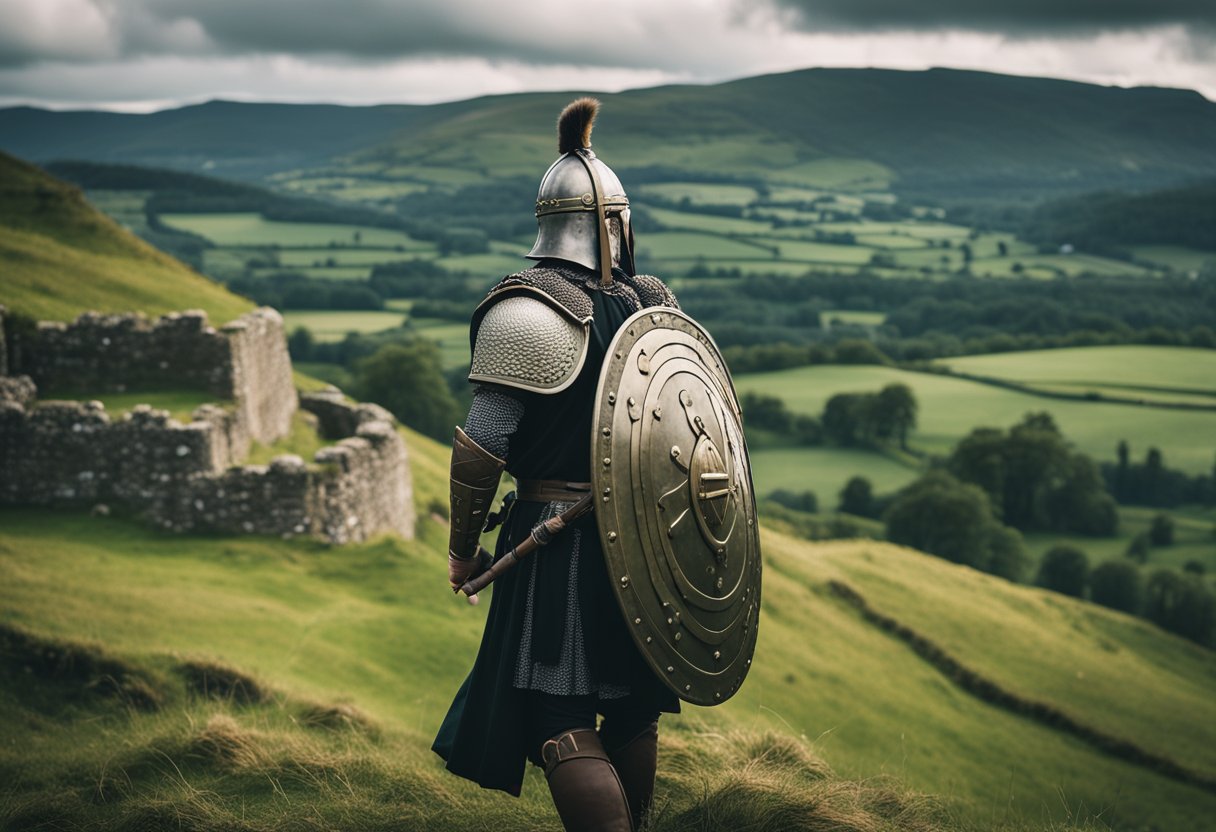
Before delving into the narratives of the Ulster Cycle, it is essential to ground ourselves in the rich historical backdrop and the societal structures that these stories portray. The tales are set in a time when legendary warriors defended their territories, and the very fabric of Celtic society is woven into their exploits.
Ulster and Connaught of the First Millennium
In the first millennium, Ulster and Connaught were prominent kingdoms in ancient Ireland. These lands, encompassing modern counties such as Down and Louth in eastern Ulster and regions in northern Leinster, were the stage for the stories of the Red Branch Warriors. This era was marked by a patchwork of kingdoms, where allegiances and rivalries shaped the political landscape.
Celtic Warriors and Society
The Celtic warriors of this epoch, epitomised by the Warriors of the Red Branch, known from the Red Branch Cycle, were renowned for their valour and martial prowess. Central to their armament was the iconic Gáe Bolg, a fearsome weapon wielded by warriors like Cú Chulainn. Beyond mere war tales, the Ulster Cycle epics, along with the Fenian Cycle, encapsulate a suite of medieval Irish heroic legends reflecting the complex tapestry of societal norms, heroic ideals, and cultural values that resonated through the ages.
Artifacts and Weapons

In the epic tales of the Ulster Cycle, the heroes are known to possess extraordinary weapons and artefacts, each steeped in magic and legend. These items are not mere tools of war but extensions of the warriors’ prowess and emblems of their status.
The Legendary Gae Bolga
The Gae Bolga is a fearsome weapon uniquely associated with Cú Chulainn, the champion of Ulster. It is said that once thrown, it could unleash thirty barbs within the body of its target, rendering wounds that were impossible to heal. According to the legends, the Gae Bolga had to be deployed with the foot and was made even more lethal by its enchantment, which makes it one of the most formidable weapons within the Irish mythos.
Cú Chulainn’s Chariot and Horses
Cú Chulainn’s chariot, driven by his loyal charioteer Laeg, was an imposing presence on the battlefield. The chariot was often depicted as an impressive construct capable of striking awe and fear into the hearts of those who saw it. His magical horses, Liath Macha and Dub Sainglend were as formidable as their master, possessing supernatural speed and endurance. The chariot and horses were not merely modes of transportation but symbolised the unstoppable force of a hero in the full throes of battle.
Manuscripts and Historiography
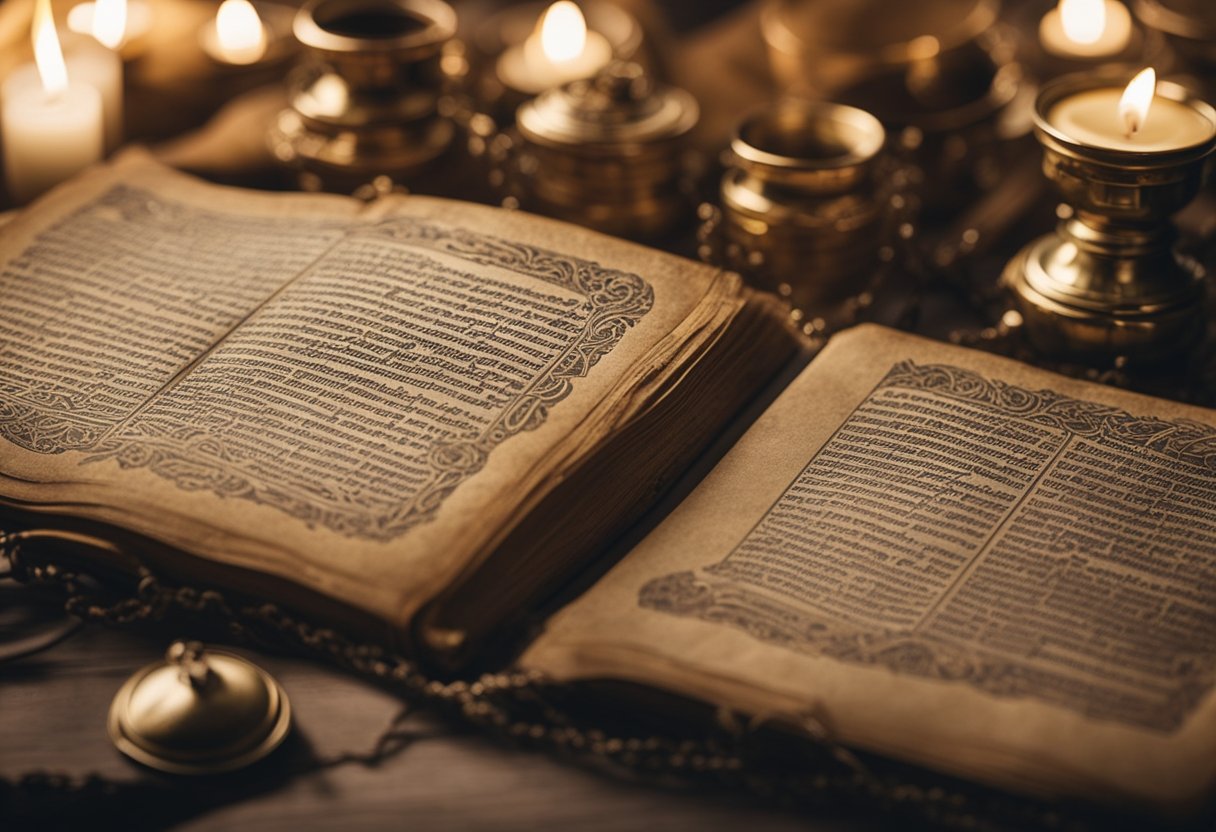
In examining the historiography of the Ulster Cycle, it’s imperative to focus on the manuscripts that preserve these epic tales. Of particular importance are ‘The Book of Leinster’ and ‘Lebor na hUidre’, among other sources. These manuscripts not only provide the text for the stories but also offer insights into the historical context and scribal practices of the time.
The Book of Leinster
The Book of Leinster, dating back to the 12th century, is a significant source for the Ulster Cycle, including the Táin Bó Cúailnge. The efforts of diligent scribes have preserved this manuscript, which remains an invaluable resource for studying Irish mythology and history. Our understanding of the Lebor Gabála Érenn and other tales of heroism is enriched by this compendium.
Lebor na hUidre and Other Sources
Possibly even older than ‘The Book of Leinster’, the Lebor na hUidre, or Book of the Dun Cow, is one of the earliest known manuscripts containing Irish mythology. These texts, copied and compiled by generations of scribes, contain fragments of the Ulster Cycle, revealing these stories’ narrative and thematic complexities that continue to fascinate us.
Frequently Asked Questions
In this section, we answer some of the most common questions regarding the Ulster Cycle and its hero, Cú Chulainn.
What are the central stories within the Ulster Cycle?
The Ulster Cycle includes a rich tapestry of tales, with the Táin Bó Cúailnge, or the Cattle Raid of Cooley, being its most famous story. This epic describes the conflicts between Connacht and Ulster, highlighting heroic deeds and intricate societal structures.
Who is the protagonist of the Ulster Cycle narratives?
Cú Chulainn is the protagonist of the Ulster Cycle, standing as Ulster’s foremost warrior and champion. His stories are central to the cycle, depicting him as a figure of great valour and complex humanity.
Which notable deeds is Cú Chulainn renowned for?
Cú Chulainn is renowned for single-handedly defending Ulster in the Táin Bó Cúailnge. His prowess in combat, including his iconic ‘warp spasm’ and the use of the mighty Gáe Bulg, are legendary.
How is the character of Cú Chulainn depicted in the Ulster Cycle epics?
In the epics, Cú Chulainn is shown as a demigod with unsurpassed martial skills. His character is complex, entailing a mixture of youthful exuberance, honour-bound duty, and tragic destiny.
What are the primary themes explored in the Ulster Cycle tales?
The Ulster Cycle explores themes of heroism, honour, fate, and societal roles within ancient Irish culture. The stories delve into the intricate relationships between individuals and communities, as well as the interplay between the mortal and the divine.
How should one correctly pronounce the name ‘Cú Chulainn’?
‘Cú Chulainn’ is pronounced as ‘kuːˈxʊlɪnʲ’ in Irish. This reflects the name’s Gaelic origin, which is important to its authentic representation in the narratives.






